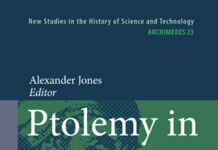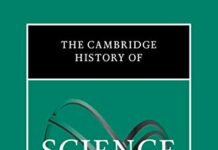
Ebook Info
- Published: 2016
- Number of pages: 666 pages
- Format: PDF
- File Size: 11.04 MB
- Authors: Alexander Jones
Description
This book explores facets of Otto Neugebauer’s career, his impact on the history and practice of mathematics, and the ways in which his legacy has been preserved or transformed in recent decades, looking ahead to the directions in which the study of the history of science will head in the twenty-first century. Neugebauer, more than any other scholar of recent times, shaped the way we perceive premodern science. Through his scholarship and influence on students and collaborators, he inculcated both an approach to historical research on ancient and medieval mathematics and astronomy through precise mathematical and philological study of texts, and a vision of these sciences as systems of knowledge and method that spread outward from the ancient Near Eastern civilizations, crossing cultural boundaries and circulating over a tremendous geographical expanse of the Old World from the Atlantic to India.
User’s Reviews
Reviews from Amazon users which were colected at the time this book was published on the website:
⭐Neugebauer started out as a student of mathematics and physics and came into the history of mathematics somewhat by chance. Although he had taken some interest in Egyptian history during his student days (133-135), “the start of all my later work” (109), as he himself says, came about not through his own design but by his being invited to review a book on the history of Egyptian mathematics.Then Felix Klein’s lectures on the history of mathematics in the 19th century needed to be edited. Courant appointed Neugebauer for the task. This was another fortuitous circumstance not only for putting Neugebauer on a path to history but also for lending legitimacy to historical study within the Göttingen mathematical mainstream. This was evidently important to Neugebauer who later said that “without … encouragement I would have hardly dared to go into that field” (109).Neugebauer’s earliest programmatic writings on the history of mathematics do indeed show a very clear desire to legitimise the subject within the Göttingen mathematical tradition. One rather flimsy attempt in this direction consisted in “drawing a daring parallel between Hilbert’s proof theory and the earliest number systems in human history” (35). A more robust theme was the idea of history as providing unification and a big-picture view to a field increasingly fractioned by specialisation. Courant and Neugebauer made this point in their preface to Klein’s lectures:”At a time when also within science the practitioners are too much impressed by the present and tend to look at the particular as in unnatural enlargement and as being of exaggerated importance, Klein’s work enables to reopen the eyes of many for the connections and lines of development of our science as a whole.” (66)Neugebauer also emphasised and elaborated the same point in his own writings (33).In later years, however, Neugebauer took what might appear to be the exact opposite stance:”I am exceedingly sceptical of any attempt to reach a ‘synthesis’ — whatever this term may mean — and I am convinced that specialization is the only basis of sound knowledge” (102)There is indeed a conflict here, and in part it is attributable to the young Neugebauer coming from mathematics and wanting to legitimise his historical turn to mathematicians, while the old Neugebauer was an established historian of mathematics who needed to answer to no one and who had reached this position through painstaking, specialised research.But I think the old and the young Neugebauer are not as irreconcilable as they might appear at first sight. In the later quotation, Neugebauer’s target is not masters like Klein but vastly overrated generalists like Sarton, whom Neugebauer called “‘Obertrottel’ (great fool)” (101). To Sarton’s credit he himself admitted that “as compared with Neugebauer I am only a dilettante” (79).In fact, even Neugebauer’s earliest writings in praise of history as synthesis include the prescient warning that “it will not be vouchsafed to many to write the history of a science in this sense” (33). Thanks to this clause he is quite in agreement with his older self as I read him.Likewise, the key historiographical commitments of the young Neugebauer are expressed as strongly as ever by the old Neugebauer still after his condemnation of synthesis quoted above. For instance, “Neugebauer criticized Cantor’s work for ‘its total lack of mathematical competence and anecdotal attitude [which] seriously discredited the history of mathematics in the eyes of mathematicians, for whom, after all, the history of mathematics has to be written'” (101-102).This idea of history of mathematics being for mathematicians had served Neugebauer well in his youth. At that time, “Neugebauer strongly felt the inadequacy of his own mathematical talent,” and “one senses the relief Neugebauer must have experienced when he found a field of study far removed from the work of the leading and often awe-inspiring Göttingen mathematicians, but still tolerated and acknowledged by them” (67).The study of history was also ideologically agreeable to Neugebauer. “Acting in an age of extremist ideologies and dictatorships, [Neugebauer] tried to maintain and expand the rationalistic and internationalist ideals long associated with Göttingen science and mathematics … [T]his commitment was central both in his organizational work and in his approach to history.” (63)Thus he attributed Babylonian scientific progress to a “blend of different types of people” in their society (81), and he “emphasized that any attempt at ‘explaining the contrast between the Babylonian numerical methods and the Greek geometrical models by the typical intuitive talents of the Greeks’ would amount to ‘renouncing the entire basis of our scientific methodology’. One has probably to read this as an indirect, but clear allusion to the alleged superiority of the ‘intuitive’ and geometrical spirit of ‘German mathematics’ in contemporary political discussions in Germany.” (80)Such considerations were also not lost on Americans who were considering arranging a position for Neugebauer in the U.S., with the director of the Institute for Advanced Study writing: “My disposition would be to invite Neugebauer … The success of the Institute of the History of Medicine at the Johns Hopkins with its liberalizing influence over the faculty as well as the students encourages me to try this novelty.” (79)
⭐
⭐
⭐
⭐
⭐
⭐
Keywords
Free Download A Mathematician’s Journeys: Otto Neugebauer and Modern Transformations of Ancient Science (Archimedes Book 45) in PDF format
A Mathematician’s Journeys: Otto Neugebauer and Modern Transformations of Ancient Science (Archimedes Book 45) PDF Free Download
Download A Mathematician’s Journeys: Otto Neugebauer and Modern Transformations of Ancient Science (Archimedes Book 45) 2016 PDF Free
A Mathematician’s Journeys: Otto Neugebauer and Modern Transformations of Ancient Science (Archimedes Book 45) 2016 PDF Free Download
Download A Mathematician’s Journeys: Otto Neugebauer and Modern Transformations of Ancient Science (Archimedes Book 45) PDF
Free Download Ebook A Mathematician’s Journeys: Otto Neugebauer and Modern Transformations of Ancient Science (Archimedes Book 45)

